Slieve League Cliffs Guide: Hikes, Tours & Tips (2025/26)
Updated August 2025 with new information about shuttles, accessibility, and seasonal wildlife
Standing majestically at 601 meters (1,972 feet) above the churning Atlantic Ocean, the Slieve League cliffs (Sliabh Liag cliffs in Irish, meaning “mountain of stone pillars”) represent one of Ireland’s most spectacular natural wonders.
Located on County Donegal’s rugged southwest coast along the Wild Atlantic Way, these ancient sea cliffs offer an experience far removed from Ireland’s more crowded tourist attractions.
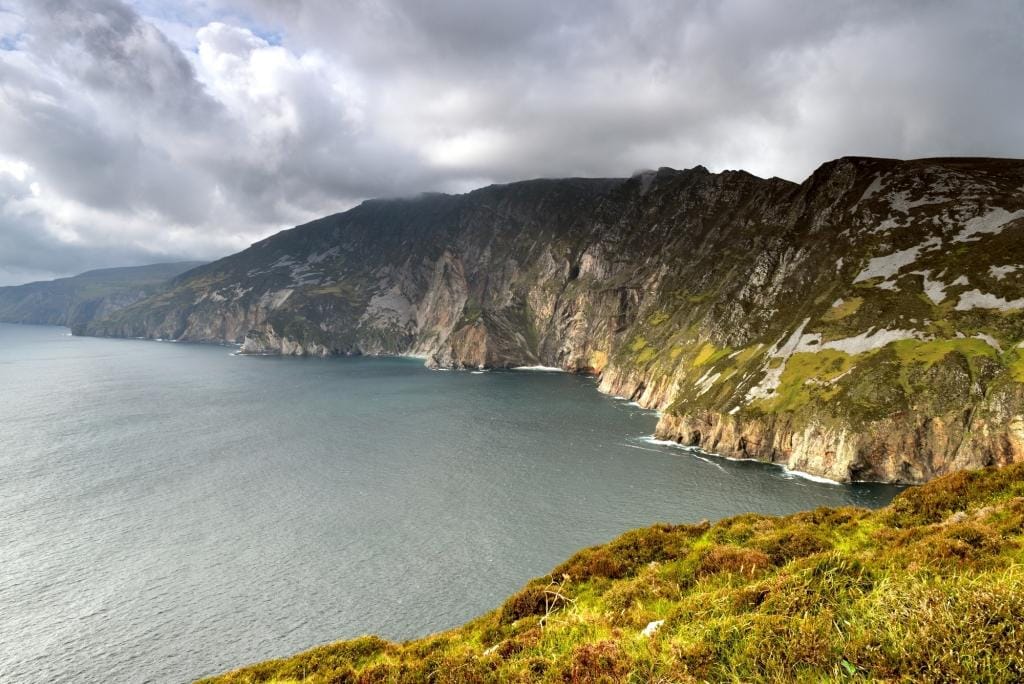

As someone who lives less than an hour from these magnificent cliffs, I can attest to their power to humble and inspire. The raw Atlantic winds that batter you on clear winter days and the intoxicating mixture of salt air, ocean spray, and turf smoke in summer create an addictive sensory experience that draws me back time and again. This is probably why Slieve League served as a place of sacred pilgrimage centuries ago – there’s something deeply spiritual about standing on these ancient rocks, feeling utterly small against the vastness of the ocean.
- Slieve League Cliffs Guide: Hikes, Tours & Tips (2025/26)
- Why Choose Slieve League Over the Cliffs of Moher
- Geological Formation and Natural History
- Getting to Slieve League: Directions and Transportation
- Hiking Options and Difficulty Levels
- Seasonal Wildlife and Best Viewing Times
- Photography Tips and Best Viewpoints
- Accessibility Information
- Where to Stay Near Slieve League
- Boat Tours and Alternative Viewpoints
- Historical Context and Wartime Heritage
- Planning Your Perfect Slieve League Visit
- Cultural Connections
- Why Slieve League Matters
Why Choose Slieve League Over the Cliffs of Moher
While most visitors to Ireland have the Cliffs of Moher on their bucket lists, Slieve League offers something increasingly rare: authentic, uncrowded natural beauty. At 601 metres (1,972 ft), it has the second-highest sea cliffs in Ireland after Croaghaun on Achill Island, and some of the highest sea cliffs in Europe.
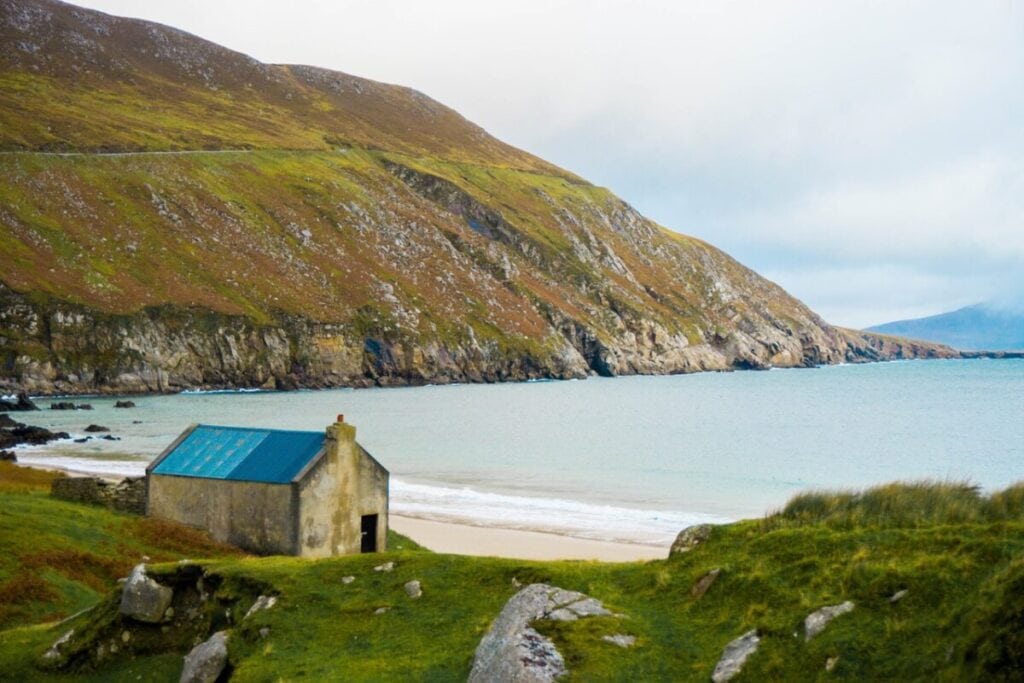

Unlike the Cliffs of Moher’s bustling visitor center and crowded viewing platforms, Slieve League remains refreshingly pristine. Here, you’ll encounter perhaps a dozen fellow visitors on busy days, not hundreds. There are no barriers disrupting the raw experience – just you, the howling winds, and the endless Atlantic horizon. Best of all, access to the cliffs themselves remains free, though parking now incurs charges.
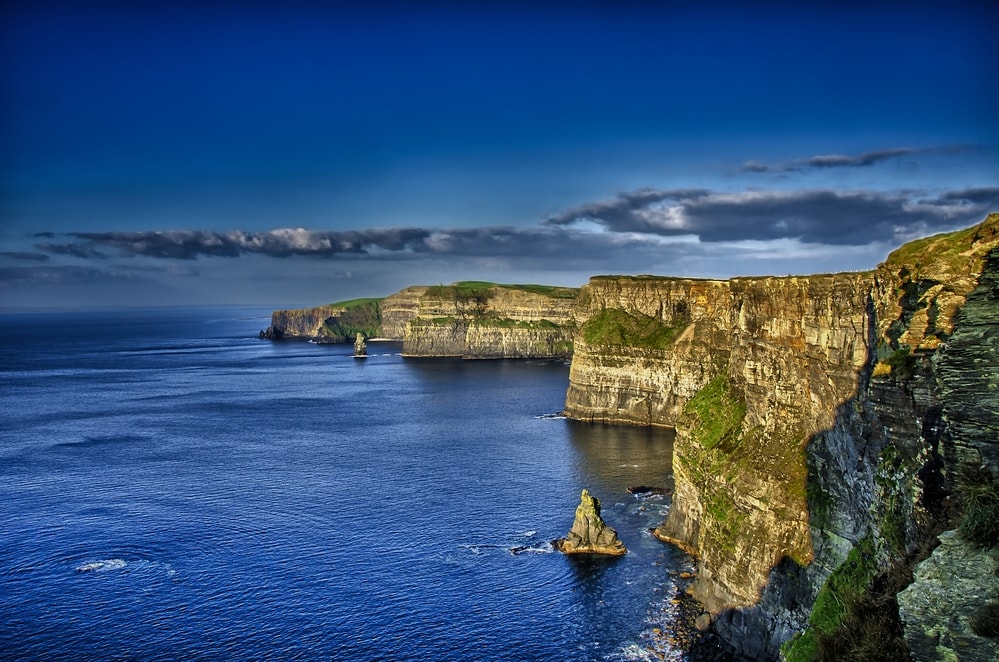

The contrast couldn’t be starker: where the Cliffs of Moher feature massive parking lots and coach tours, Slieve League offers narrow country roads and peaceful solitude. This isn’t to diminish the Cliffs of Moher’s beauty, but rather to highlight why many consider Slieve League Ireland’s best-kept secret.
Geological Formation and Natural History
Understanding Slieve League’s geological story adds profound depth to your visit. The cliffs have developed over the past 100,000 years, during and since the last ice age. The bedrock is Dalradian in age, with the primary rock type being thinly-bedded basal Slieve Tooey Quartzite Formation. Quartzites and gneisses of the Slieve League Formation occur at the base.


These ancient rocks, formed over 600 million years ago during the Neoproterozoic era, tell the story of Ireland’s complex geological past. The Dalradian rocks were originally sediments deposited in ancient seas, later subjected to intense pressure and heat that transformed them into the resilient quartzites and gneisses we see today.
The distinctive layered appearance of the cliffs results from millions of years of geological processes. Glacial action during the last ice age carved and sculpted the landscape, while relentless Atlantic storms continue to shape these cliffs today. The Geological Society of London recognizes Slieve League as one of Ireland’s most significant geosites, highlighting its importance to understanding regional geological history.


The cliff’s dramatic profile, with its knife-edge summit ridge, developed through a combination of marine erosion from below and weathering from above. This ongoing process means the cliffs continue to evolve, albeit imperceptibly during human timescales.
For detailed geological information, visit the Geological Survey Ireland or the Geological Society of London’s Slieve League profile.
Getting to Slieve League: Directions and Transportation
Driving Times to Slieve League:
- From Dublin: 4 hours via N4 and N15
- From Belfast: 3 hours via A5 and N15
- From Galway: 3 hours via N17 and N15
- From Donegal Town: 55 minutes via R263
- From Killybegs: 30 minutes via R263
The Route from Major Towns:
From Donegal Town, take the N56 toward Killybegs (well-signposted). This scenic coastal route passes through traditional Irish countryside and fishing villages. About 2km before reaching Killybegs, watch for signs directing you toward the R263.
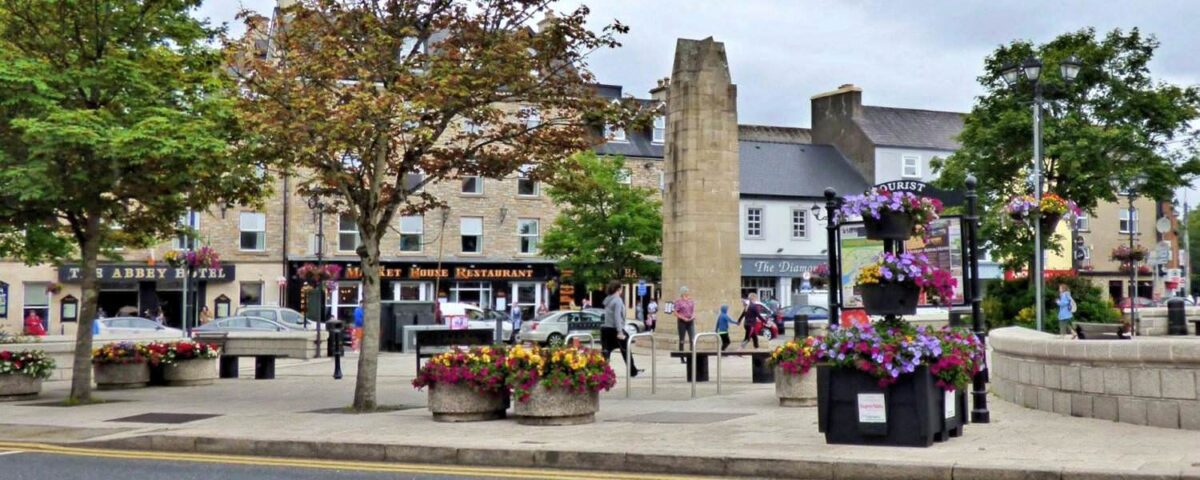

From Killybegs, follow the R263 through Bruckless and toward Carrick. This route offers stunning coastal views and passes several excellent stops, including Largy Point and Donegal’s secret waterfall near Bruckless.
The final approach from Carrick to Teelin follows narrow country roads typical of rural Donegal. Drive carefully, as these roads are single-track in places with passing points. The journey rewards you with increasingly dramatic coastal scenery.
Public Transport Options:
While there’s no direct public transport to Slieve League, several tour operators offer guided excursions:
- Donegal Tours: Runs coach tours from Letterkenny and Donegal Town, including stops at Muckross Head and Glencolmcille Folk Village
- Slieve League Tours: Operates from Teelin, offering guided shuttle services unsuitable for large coaches
- Walking Ireland: Provides expert-guided hiking tours with pickup locations in Donegal Town, Glenties, Ardara, and Killybegs
Always verify current tour schedules and booking requirements, as services vary seasonally.
Parking and New Access Rules
Important Changes: Recent years have brought significant changes to Slieve League access. While cliff access remains free, parking charges now apply at the upper viewing area.


Parking Options:
Slieve League Vistor Centre (Free Parking + Shuttle)
Free parking available. Shuttle bus service: €6 adult, €5 student/OAP, €4 children, €18 family tickets. Service runs 10:10 AM – 5:30 PM daily (seasonal). Booking recommended: www.sliabhliag.com
Upper Viewing Area (Direct Access)
€5 for 2 hours. €15 all-day ticket. Limited spaces (approximately 20-30 vehicles). Often full during peak times
Accessibility Considerations: The shuttle service makes Slieve League accessible to visitors who cannot manage the steep 2.8km walk from the Cultural Centre. The shuttle buses feature step-free access and can accommodate most mobility needs, though visitors should contact operators directly about specific requirements.


Hiking Options and Difficulty Levels
Option 1: Bunglas Viewing Point Walk (Easy-Moderate)
Distance: 2.8km return from Cultural Centre Time: 1.5-2 hours return Difficulty: Moderate incline on paved/gravel path Accessibility: Shuttle available for those unable to walk
This is the most popular route, following a well-maintained path to the main viewing point. The steady climb rewards hikers with increasingly spectacular views. About halfway up, you’ll pass through a sheep gate – please ensure its properly closed behind you.
The path offers several rest points with benches, making it manageable for most fitness levels. The final approach to the viewing area features information panels about local history and wildlife.


Option 2: The Pilgrim’s Path (Advanced Only)
Distance: 6km return Time: 3-4 hours return Difficulty: Extremely challenging, exposed cliff edges Requirements: Advanced hiking experience, appropriate gear
WARNING: The Pilgrim’s Path is unmarked and extremely dangerous. Not suitable for children, dogs, or inexperienced hikers.
This ancient route follows the cliff edge along what locals call “One Man’s Pass” – a narrow, knife-edge ridge with dramatic drops on both sides. The path dates to times when Catholic worship was illegal, and the faithful met secretly at clifftop “Mass Rocks.”
Along this challenging route, you’ll discover:
Remains of an early Christian monastic site with beehive hut foundations
A historic Mass Rock where clandestine religious services were held
Ruins of a Napoleonic-era signal tower, built during fears of French invasion
Views toward Rathlin O’Birne Island, site of a 5th-century monastery


Option 3: Alternative Route for Those with Vertigo
Less experienced hikers can take the inland path that avoids One Man’s Pass while still offering excellent views. This longer route circumnavigates the cliff edge, providing spectacular photography opportunities without the extreme exposure.
Seasonal Wildlife and Best Viewing Times
Slieve League’s dramatic cliffs and surrounding waters support diverse wildlife throughout the year. The area forms part of a Special Area of Conservation (SAC), protecting its unique marine and terrestrial ecosystems.
Spring (March-May): The Awakening
Seabirds: Puffins: These charming seabirds are occasional visitors during the breeding season. Look for their colourful beaks and waddling gait near grassy cliff edges. Peak puffin viewing occurs from April through early June.


Marine Life: Grey seals become increasingly active as pupping season approaches. Dolphins, particularly bottlenose dolphins, begin appearing more frequently in Donegal Bay.
Flora: The cliff-top vegetation comes alive with sea thrift (pink cushions), sea campion (white flowers), and various grasses adapted to salt spray and strong winds.
Summer (June-August): Peak Wildlife Season
Seabirds: This is prime time for seabird watching. Seabirds including puffins, razorbills, and kittiwakes nest along the cliff ledges. Gannets perform spectacular diving displays offshore.
Marine Mammals: Look out for dolphins, seals, tuna, basking sharks and many species of bird. Basking sharks, the world’s second-largest fish, feed on plankton in these waters during summer months.
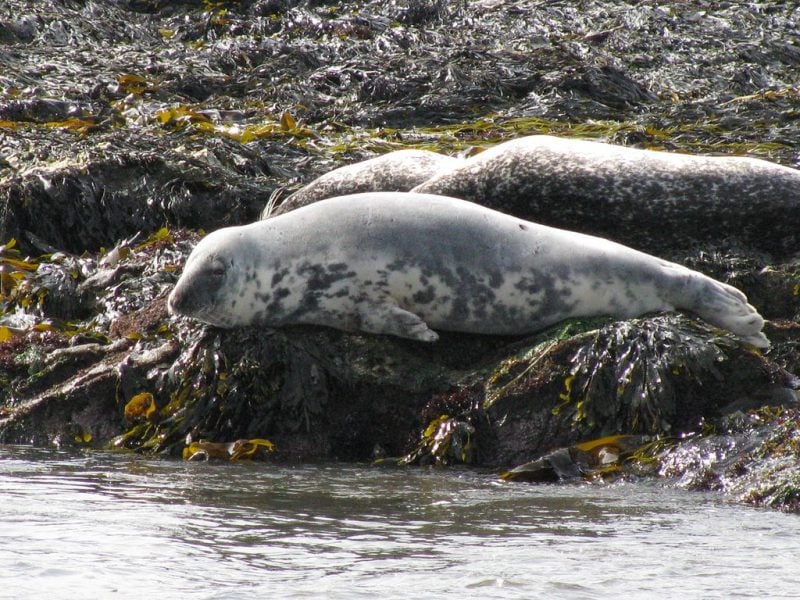

Photography Opportunities: Extended daylight hours (until 10 PM in midsummer) provide exceptional golden hour photography conditions.
Autumn (September-November): Migration Spectacle
Bird Migration: Witness thousands of migrating seabirds using Slieve League as a navigation landmark. This includes rare species blown off course by Atlantic storms.
Storm Watching: Atlantic storms create dramatic wave action against the cliffs – spectacular but requiring extreme caution.


Changing Light: Shorter days bring intense, dramatic lighting conditions beloved by photographers.
Winter (December-February): Raw Beauty
Seals: Grey seal pupping season peaks in autumn and extends into winter. Observe from respectful distances using binoculars.
Weather Drama: Winter storms showcase the Atlantic’s raw power, but exercise extreme caution – winds can exceed 100 mph.
Solitude: Often completely deserted, winter visits offer unparalleled solitude and connection with nature. Possible Northern lights sightings.


For current wildlife reports and guided tours, contact the National Parks & Wildlife Service or local operators like Sliabh Liag Boat Trips.
Photography Tips and Best Viewpoints
Golden Hour Magic
Slieve League offers some of Ireland’s most dramatic coastal photography opportunities. The cliffs face southwest, making them ideal for sunset photography from April through October.
Best Times for Photography:
Sunrise: 6:00-8:00 AM (summer), 8:00-9:00 AM (winter)
Golden Hour: 2 hours before sunset year-round
Blue Hour: 30 minutes after sunset for ethereal cliff silhouettes


Prime Photography Locations
1. Bunglas Viewpoint (Main Viewing Area)
Best for: Classic cliff profile shots, panoramic landscapes


Accessibility: Most accessible viewpoint via shuttle or moderate hike
2. One Man’s Pass (Advanced Access Only)
Best for: Dramatic knife-edge ridge shots, extreme landscape photography


Caution: Extremely dangerous – only for experienced hikers with proper safety equipment
3. Teelin Harbour Viewpoint
Best for: Distance shots showing cliff scale, boat tour departure point
Accessibility: Easy access by car


4. Carrigan Head
- Best for: Alternative cliff perspectives, fewer crowds
- Access: Requires off-path hiking experience
Drone Photography Regulations
Ireland’s drone regulations allow flight in uncontrolled airspace with specific restrictions:
- Maximum altitude: 400 feet (120 meters)
- Maximum distance from operator: 300 meters
- Maintain visual line of sight at all times
- Avoid flying within 5 kilometres of aerodromes
- Respect privacy and wildlife nesting areas
Note: Always check current regulations with the Irish Aviation Authority before flying drones.
Accessibility Information
Mobility Considerations
Fully Accessible Options:
Slieve League Cultural Centre: Ground-level access with accessible parking, restrooms, and café


Ti Linn Craft Shop: Step-free entry, accessible facilities
Shuttle Bus Service: Designed to accommodate wheelchairs and mobility aids (advance booking recommended)
Partially Accessible:
Bunglas Viewpoint: The shuttle provides access to within 200 meters of viewing areas. Some viewpoints require short walks on uneven terrain


Viewing Platforms: Limited formal platforms, but some areas allow wheelchair access to cliff views
Accessibility Support Services
Contact Information: Slieve League Cultural Centre: +353 (0)74 973 9077. Advance booking recommended for accessibility requirements
Where to Stay Near Slieve League
Finding accommodation near Slieve League requires planning, as the remote location offers limited but charming options.
Teelin Area (Closest to Cliffs)
Distance: 2km from cliffs. Features: Traditional Irish pub with accommodation, excellent local food, live music. Accessibility: Ground floor rooms available
Personal Recommendation: This remains one of my favorite spots in Teelin – the atmosphere is authentically Irish, and their seafood chowder is exceptional.


Carrick (15 minutes from cliffs)
Several B&Bs and self-catering cottages. Famous connection: Sarah Jessica Parker and family regularly stay in this area. Character: Traditional Irish village with strong Gaeltacht culture.
I recommend: Slieve League Lodge, certain rooms have their own private bathroom, while others have a shared bathroom. At Slieve League Lodge you will find a bar and a shared kitchen. Other facilities offered at the property include a shared lounge.


Killybegs (30 minutes from cliffs)
Advantages: Wider accommodation selection
- Ireland’s premier fishing port with excellent seafood restaurants
- More amenities and services
Recommended Options:
Bay View Hotel: Harbor views, accessible rooms available
Realt na Mara: Realt na Mara in Killybegs offers a spacious, recently renovated holiday home with three bedrooms and two bathrooms. The property features a fully equipped kitchen, dining area, and comfortable living spaces.
Multiple B&Bs: Contact Killybegs Tourism Office for current availability
Donegal Town (55 minutes from cliffs)
Best for:
Travelers wanting more amenities and dining options
Those combining Slieve League with broader Donegal exploration
Recommended Accommodations:
Harvey’s Point Hotel: Luxury lakeside location, full accessibility


Abbey Hotel: Town center location, accessible facilities


Lough Eske Castle: A stunning castle in the middle of incredibly scenic Blue Stack Mountains and Lough Eske.
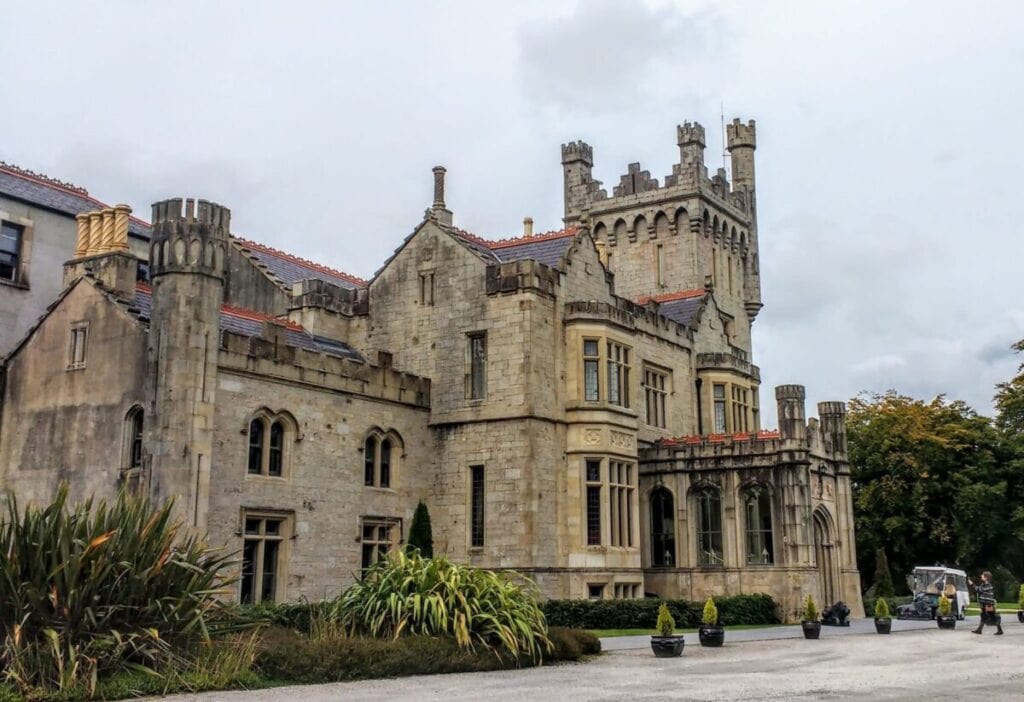

Traditional Irish Cottage Rentals: range of authentic Irish cottages
Book accommodation well in advance, especially for summer visits and holiday weekends.
Boat Tours and Alternative Viewpoints
Experiencing Slieve League from the ocean provides a completely different perspective on these magnificent cliffs’ true scale and grandeur.
Sliabh Liag Boat Trips (Teelin-based) Highly recommended a great tour with locals
Operating Since: 1995 Capacity: Up to 12 passengers per boat (2 boats available) Season: April through October (weather dependent) Duration: Approximately 1 hour. If you’re lucky you might spot dolphins and seals in the waters below. The smaller boat size allows for more intimate wildlife encounters and flexible routing based on sea conditions.
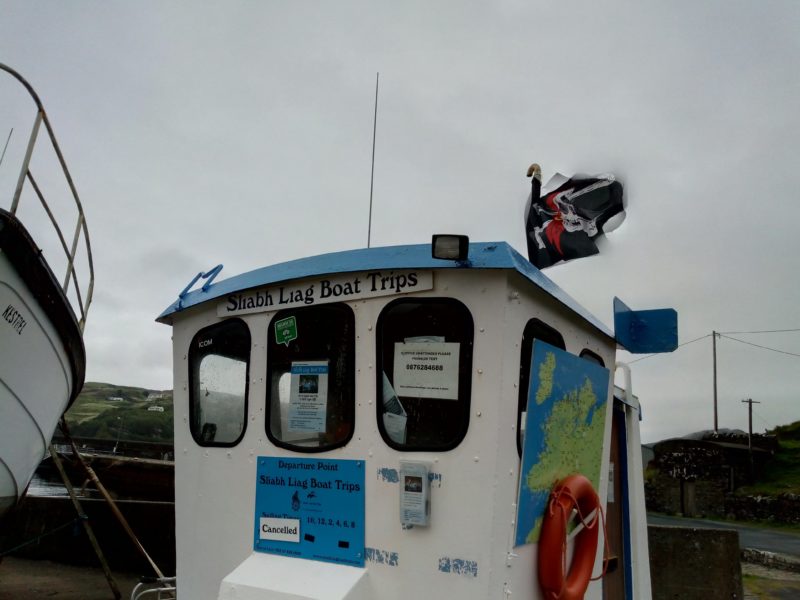

Ireland Wild Life Escapes – Killybegs based
On route you will pass many points of Interest including Rotten Island and St John’s Point lighthouses, Drumanoo Head, Fintra Beach, Muckross Head and the famous Giant’s Desk and Chair which sit in the bay ahead of the mighty cliffs.
Atlantic Coastal Cruises Killybegs-based
Vessel: “The Pirate Queen” (96 passengers) Duration: 90 minutes to 2 hours Cost: €30 adults, €20 children Features: Larger vessel suitable for those preferring more stable platforms


Historical Context and Wartime Heritage
Slieve League holds significant historical importance beyond its natural beauty. During World War II, when Ireland remained neutral, the cliffs played a crucial role in Allied aviation safety.
The Donegal Corridor agreement allowed Allied aircraft to traverse Irish airspace through a narrow strip along the coast. To aid navigation, Ireland placed large stone “EIRE” signs on prominent headlands, including Slieve League. These signs served dual purposes: helping Allied pilots identify Irish territory and signaling German airmen running low on fuel that they could safely land in neutral Ireland.
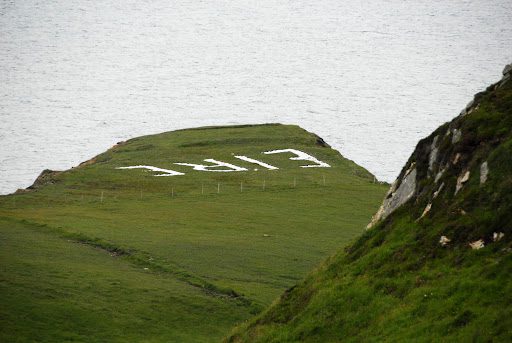

You can still see remnants of one EIRE sign near the main viewing point at Slieve League. Originally two signs marked this location, but the viewing area parking was built over one. The remaining sign, though weathered and indistinct, represents a fascinating chapter in Irish-Allied cooperation during wartime neutrality.
During this period, airmen from various nations who landed in Ireland were interned at the Curragh Camp. Remarkably, they enjoyed considerable freedom during daylight hours, often cycling through Donegal’s peaceful lanes before returning for evening curfew.
Several aircraft crashed in Donegal waters during these years, including a tragic Canadian plane crash at Tullan Strand near Bundoran that killed all aboard. These incidents remind us of the treacherous nature of wartime aviation and the strategic importance of Ireland’s western coastline.


For more information about Ireland’s wartime history, visit the National Archives of Ireland or the Military Archives.
Planning Your Perfect Slieve League Visit
Best Times to Visit
For Photography: April through October offers the best lighting conditions, with summer providing extended golden hour opportunities.
For Wildlife: May through August for seabirds; September through November for marine mammals and migration spectacles.
For Solitude: November through March, though weather can be challenging.
For Accessibility: June through August when shuttle services run most frequently and weather is most predictable.
Combining with Other Attractions
Slieve League pairs perfectly with other Wild Atlantic Way destinations:
Glencolmcille Folk Village: 20 minutes away, showcasing traditional Irish rural life with thatched cottages to visit and on site interpreters.


Killybegs: Ireland’s premier fishing port with excellent seafood – must try the Seafood Shack that serves up great seafood chowder and fish and chips. Find the Clochan huts on the way into town.






Silver Strand (Malinbeg): Hidden beach accessible via challenging cliff path of 174 steps to the beach.
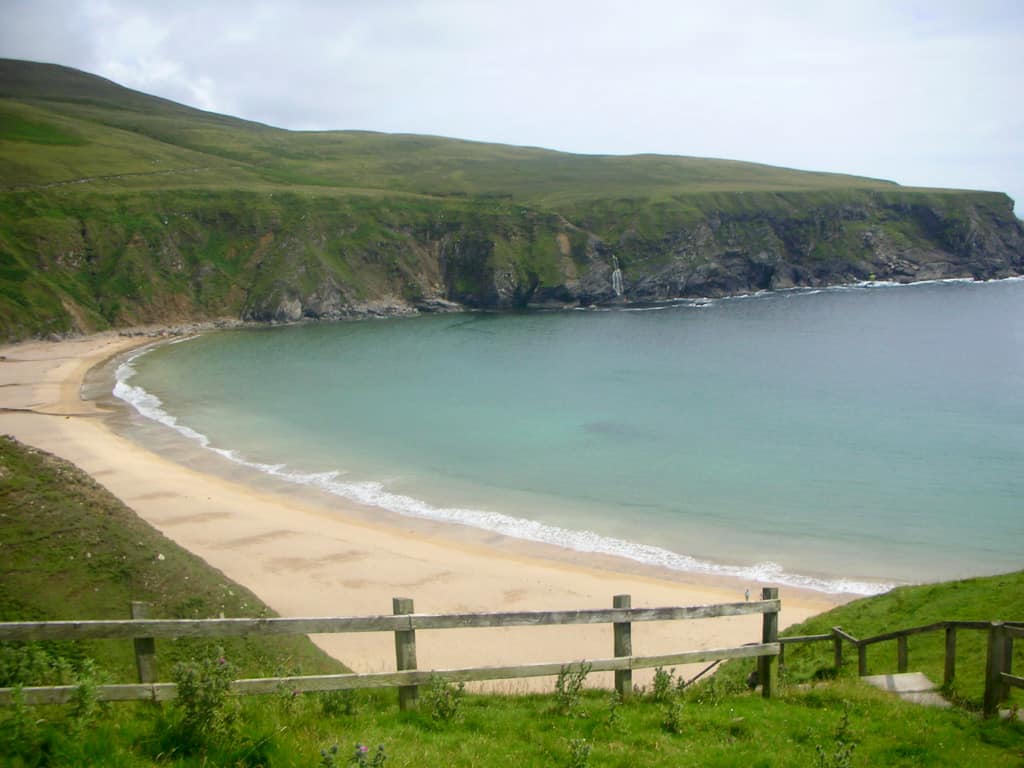

Glengesh Pass: Dramatic mountain pass with spectacular views it weaves through steep, serpentine curves with panoramic views of untouched valleys—perfect for road trips and photography.


Kilcar: A Gaeltacht (Irish-speaking) village with traditional music. Visit Kilcar Woolen Mills for handwoven textiles.


Cultural Connections
The Slieve League area remains part of the Gaeltacht, where Irish (Gaeilge) is the primary spoken language. This offers visitors authentic exposure to traditional Irish culture. Local place names, pub conversations, and cultural practices maintain strong connections to pre-English Ireland.
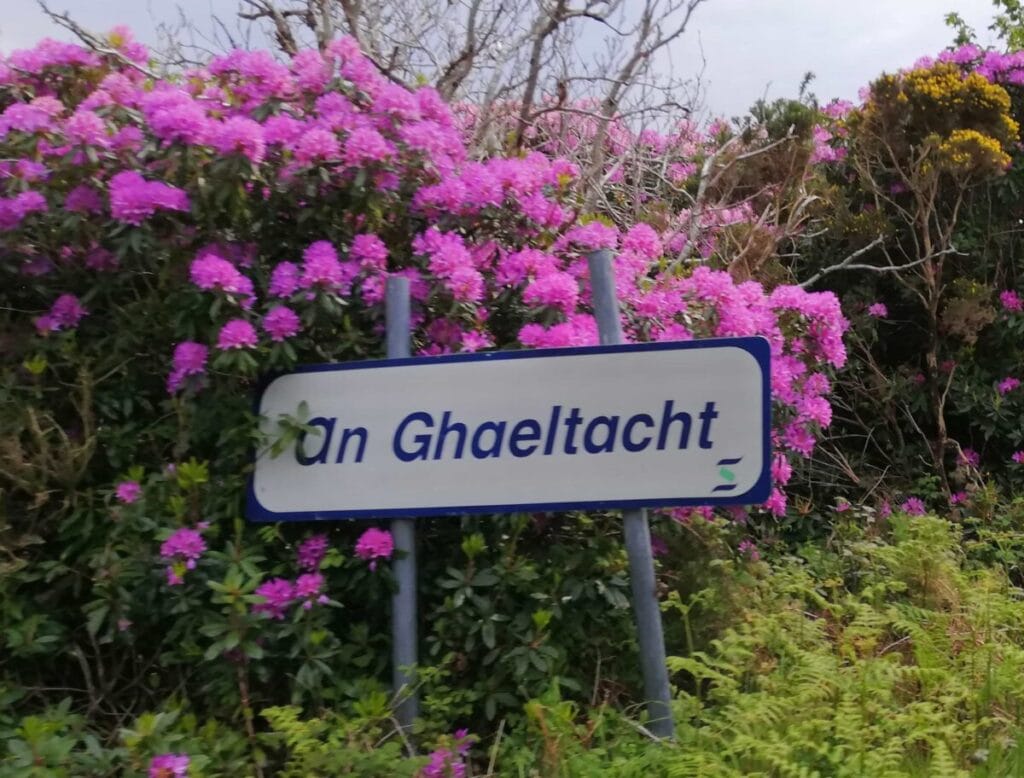

Consider attending local festivals or traditional music sessions at venues like the Rusty Mackerel to experience this living culture firsthand.
Why Slieve League Matters
In an increasingly crowded world, places like Slieve League represent something precious: the opportunity to experience nature’s raw power without commercialization or crowding. These ancient cliffs, carved by time and shaped by countless Atlantic storms, offer perspective on our small place in the natural world.
The geological story spanning 600 million years, the wildlife that calls these cliffs home, and the human history etched into every stone create layers of meaning that extend far beyond simple sightseeing. Standing on these wind-battered heights, watching gannets dive into the churning Atlantic below while breathing air untainted by urban pollution, you connect with something fundamental about Ireland’s wild western edge.


Whether you come for the hiking, the photography, the wildlife, or simply the peace that comes from experiencing one of Europe’s most dramatic landscapes, Slieve League delivers experiences that remain with you long after you’ve returned home.
As someone who has watched sunrise and sunset from these cliffs in every season, I can promise this: Slieve League will change your perspective on what makes Ireland special. It’s not just about the dramatic scenery – though that alone justifies the journey. It’s about connecting with a landscape that remains essentially unchanged despite centuries of human presence, where the rhythm of wind and wave provides the only soundtrack you need.
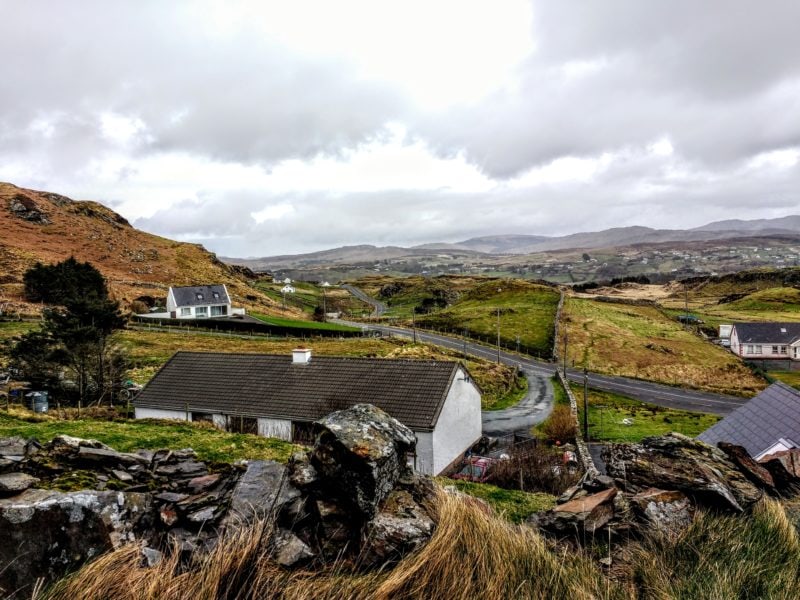

Plan your visit, respect the landscape and wildlife, and prepare for one of Ireland’s most rewarding natural experiences. The ancient stones of Sliabh Liag are waiting.
For the most current information about access, shuttles, and weather conditions, visit www.sliabhliag.com or contact the Slieve League Cultural Centre at +353 (0)74 973 9077.
Additional Resources:
- Geological Survey Ireland – Scientific information about Irish geology
- National Parks & Wildlife Service – Conservation and wildlife information
- Wild Atlantic Way – Regional tourism information
- Irish Aviation Authority – Current drone regulations
- Met Éireann – Irish weather forecasting service
